Special Report
The Biggest Worries About Children’s Health

Published:

Raising a child has never been easy, and parents have always worried about their children when they left home for school or work. Today parents are concerned about the welfare of their children within the home as well because of the insidious dangers associated with the internet and social media.
To determine the top concerns among parents about children’s health, 24/7 Tempo reviewed the findings of the University of Michigan’s C.S. Mott Children’s Hospital National Poll on Children’s Health.
Internet-related concerns ranked high in the poll, which showed that 61% of adults identified bullying/cyberbullying as a “big problem.” Just behind at 60% was not getting enough exercise, which many experts link to excessive use of social media and gaming. Internet safety was fifth at 55%.
Other health concerns for parents in the poll were unhealthy eating, child abuse and neglect, suicide, depression, teen pregnancy, stress, and drug abuse.
The poll also asked respondents who are parents of children up to 18 years to assess their level of concern for how child health topics might impact their kids. The highest proportion of parents were “very concerned” about bullying/cyberbullying, internet safety, and stress.
Motor vehicle accidents and school violence were the next greatest concerns for parents. The latter issue has been brought into stark relief with the number of school shootings in recent years — one of the ways American life has changed over the last decade.
Click here to see the biggest worries about children’s health.
To identify the biggest concerns about children’s health, 24/7 Tempo reviewed every edition of the University of Michigan’s C.S. Mott Children’s Hospital National Poll on the top 10 child health concerns between 2013 and 2017, the most recent year for which data is available. The Mott Poll surveys are conducted three times a year and are based on responses from about 2,000 parents who have at least one child under the age of 18. While the health issues parents identify as concerns have mostly remained the same over years, some, such as school violence and gun-related injuries, are new entries.

Bullying
Bullying is the leading health problem for U.S. children. One in three parents are very concerned about bullying and cyberbullying for their children, according to the 2017 Mott Poll on top children’s health concerns.
About one in four American students say they have been bullied at school. A fifth of all students between 12 and 18 years of age in the country have experienced bullying in some form, according to the National Center for Education Statistics and Bureau of Justice Statistics. These are 20 warning signs your child may be getting bullied at school.
There is no federal law that directly addresses bullying, but in some cases it can overlap with laws against harassment based on race, country of origin, disability, or religion. Some states have established anti-bullying laws or other regulations to address the problem.
[in-text-ad]
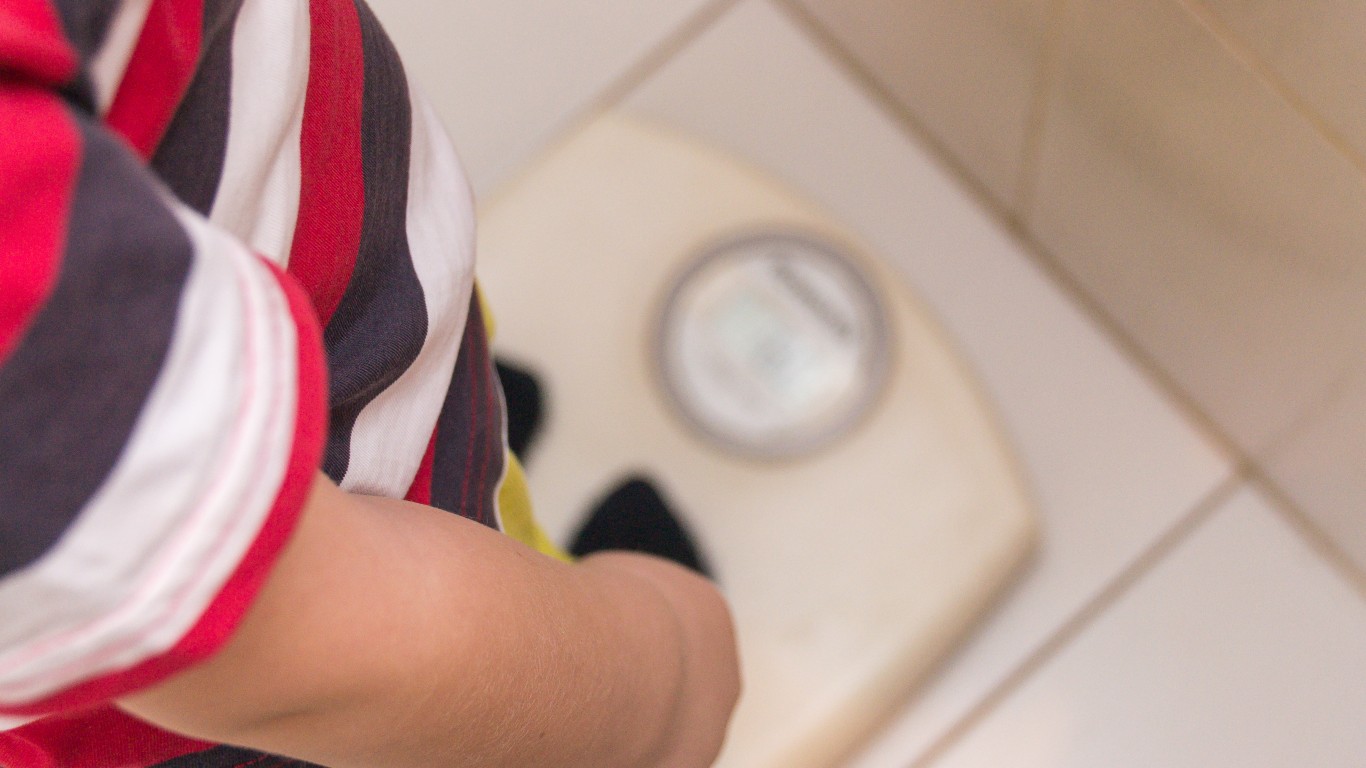
Obesity
One of the top health concerns among parents in 2017 is obesity — and the problems surrounding the condition, such as inadequate exercise and unhealthy eating. Nearly a fifth of children and adolescents between 2 and 19 years of age are obese, according to the CDC. That’s about 13.7 million people.
A 2015 CDC study found that close to 34% of children and adolescents eat fast food every day and that an average of 12.4% of their daily calories come from fast food — here are 30 healthy eating habits that will change your life.
Obese children are more likely to be obese as adults as well, the CDC says. Adult obesity increases the risk of several serious health conditions, including heart disease, type 2 diabetes, and cancer.

Drugs
Drugs have consistently been in the top 5 of parents’ health concerns for their children. More than 2 million people older than 12 had an opioid use disorder in 2016, including 153,000 12- to 17-year-olds, according to the National Institute on Drug Abuse. About half of students in 9th through 12th grade have used marijuana. Half of all new drug users are under the age of 18. The biggest reason why they first try drugs of any kind is experimentation.
Substance abuse is especially serious among children and teens because the brain is still developing. Children who have abused drugs are more likely to have health problems such as heart disease, high blood pressure, and sleep disorders as adults.
In the United States, nearly every state has a county where residents die of drug overdoses at a higher annual rate than the national figure of 18.2 fatalities per 100,000 Americans — these are the places with the worst drug problems in every state.

Smoking and vaping
Smoking has consistently been rated as a top health problem for kids from the perspective of adults. However, the concern about smoking and tobacco has dropped over the years from near the top of the list. It was No. 4 in 2014, then No. 7 in 2015; a year later it was a top concern just among white adults. In 2017, smoking did not make the Top 10 list.
About 2,500 children under 18 try their first cigarette every day. About a third of them will become regular daily smokers, according to the American Lung Association.
The National Institutes of Health calls the rise in vaping among teens “alarming.” The vapor may contain nicotine, which is the addictive drug in tobacco, various flavors, and other chemicals. About 37% of 12th graders reported vaping in 2018, compared with 28% in 2017. A recent Gallup survey found that 20% of 18- to 29-year-olds vape regularly, more than double the national average.
More than 6 million people across the world die every year from causes directly linked to tobacco use, and about 1 million more die from second-hand smoke. Overall, the deadly habit kills half of its users — here is what exactly happens to your body once you start smoking.
[in-text-ad-2]
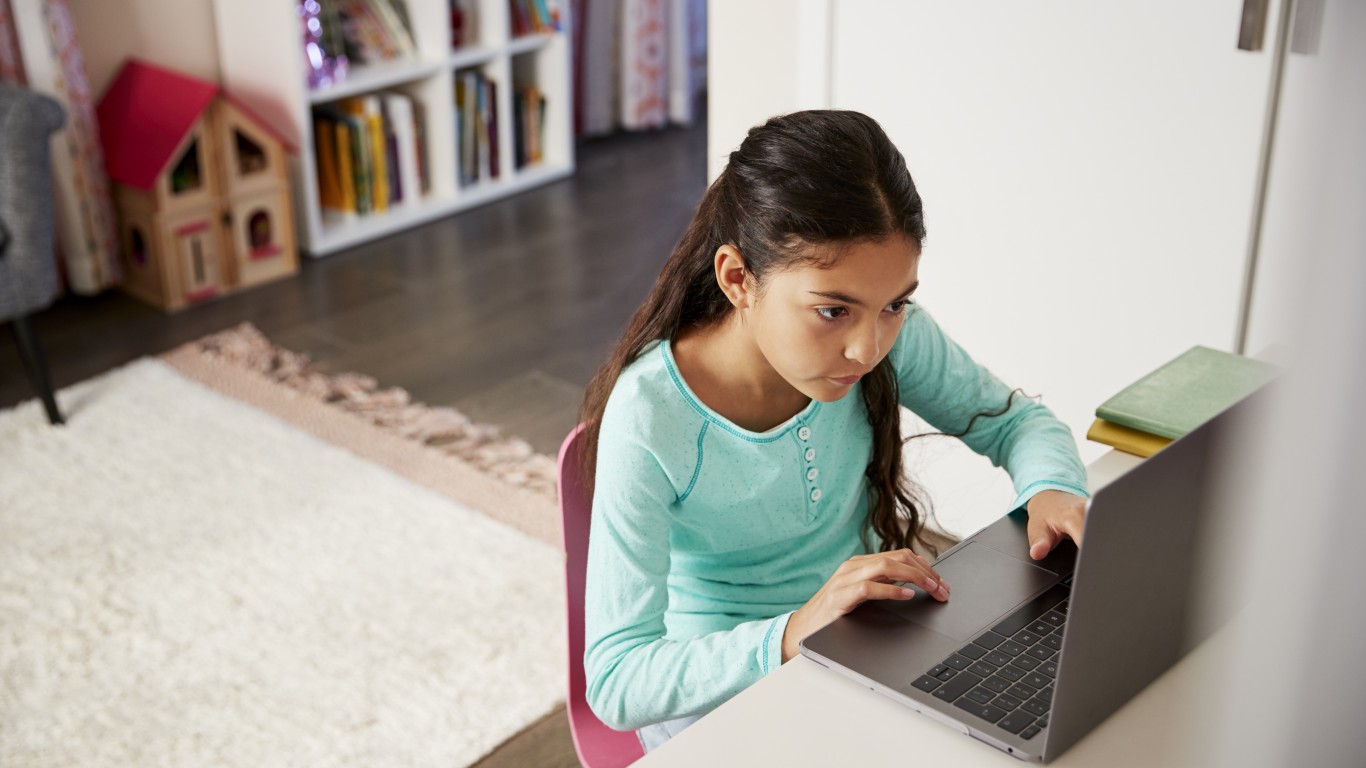
Online safety
Internet safety has been a top health concern for parents for years. After examining thousands of security incidents in 2019, Verizon found that almost all malware arrived on computers via email in 94% of cases. The most common type of social engineering attack is phishing, the goal of which is to convince users to install malware. About 40% of phishing command and control servers are in the United States.
There is a federal law, the Children’s Online Privacy Protection Act (COPPA), designed to protect children younger than 13 when they are online. Any personal information about a child cannot be released without a parent’s consent. Websites are required to explain their privacy policies and get parental consent before collecting or using a child’s name, address, phone number, or Social Security number. The law does not allow sites to require more personal information to play a game or enter a contest.

Drinking
Alcohol is the most commonly abused drug among young people in the United States, according to the CDC. The 2017 Youth Risk Behavior Survey found that 30% of high school students drank some amount of alcohol every month and 14% binge drank. Last year, 4% of 8th graders and 14% of 12th graders binge drank in a period of two weeks, according to the Monitoring the Future Survey.
Alcohol can have negative effects on a child’s brain, which is still developing until the early 20s. A kid’s problem-solving skills and performance at school may suffer. In the long term, alcohol can negatively affect children’s mood, memory, and mental health.
Drinking too much is the fourth leading preventable cause of death in the United States. It kills one in 10 working-age adults, or about 88,000 people every year, cutting the lives of those who died by an average of 30 years, according to the CDC — here are the drunkest cities in every state.
[in-text-ad]
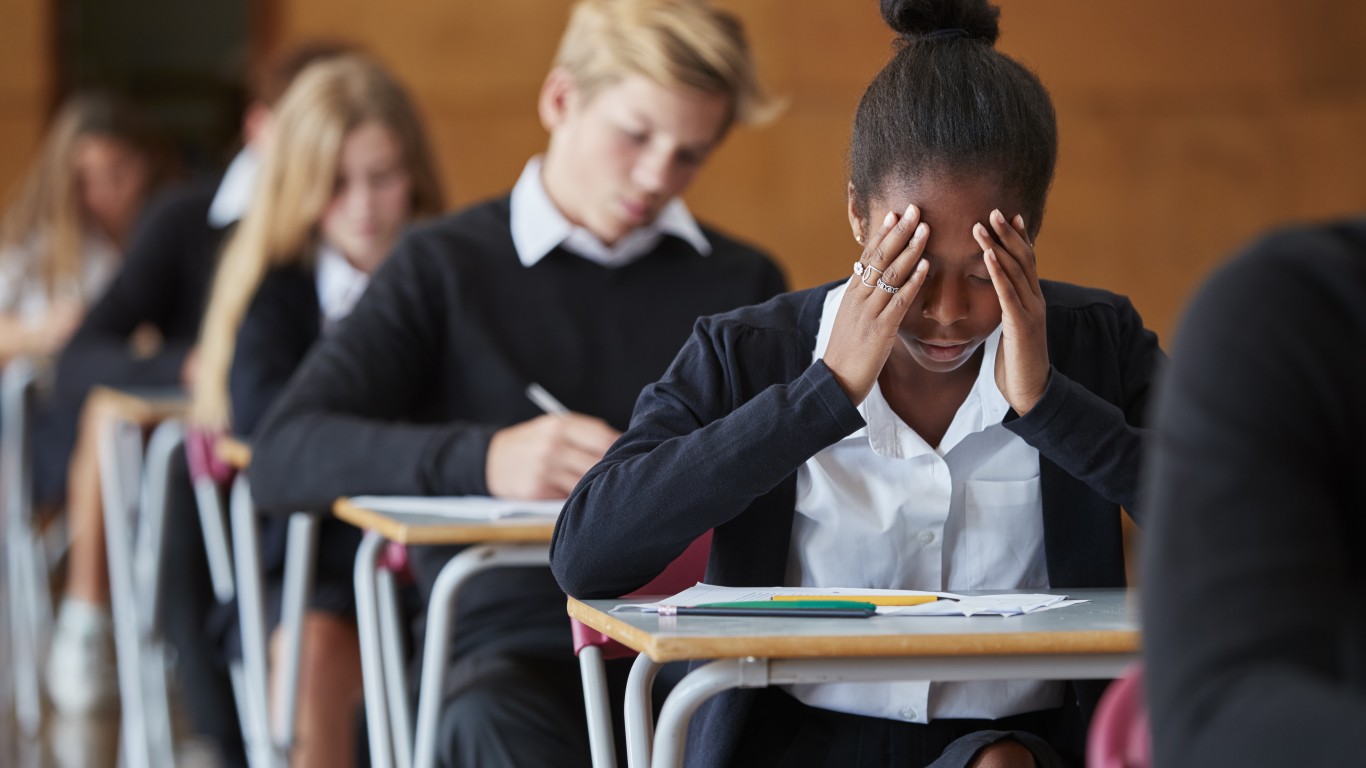
Stress
Stress has been a common area of concern for parents at least since 2015, with about 40% of adults identifying it as a problem, according to the Mott Poll. Too much stress may negatively affect how children think, behave, and feel. Anxiety in children has been steadily rising, according to the National Institutes of Health.
Almost 1 in 3 of all adolescents between 13 and 18 years of age will experience an anxiety disorder. Between 2007 and 2012 alone, anxiety disorders in children and teens went up 20%. Some of the biggest reasons why children feel stress are high expectations and pressure to succeed. Some of the physical symptoms of stress are changes in eating habits, headaches, nightmares, and stomach pain.
Not all Americans experience equal levels of stress. The levels of stress experienced by different groups varies from state to state — these are the most stressed out cities in every state.
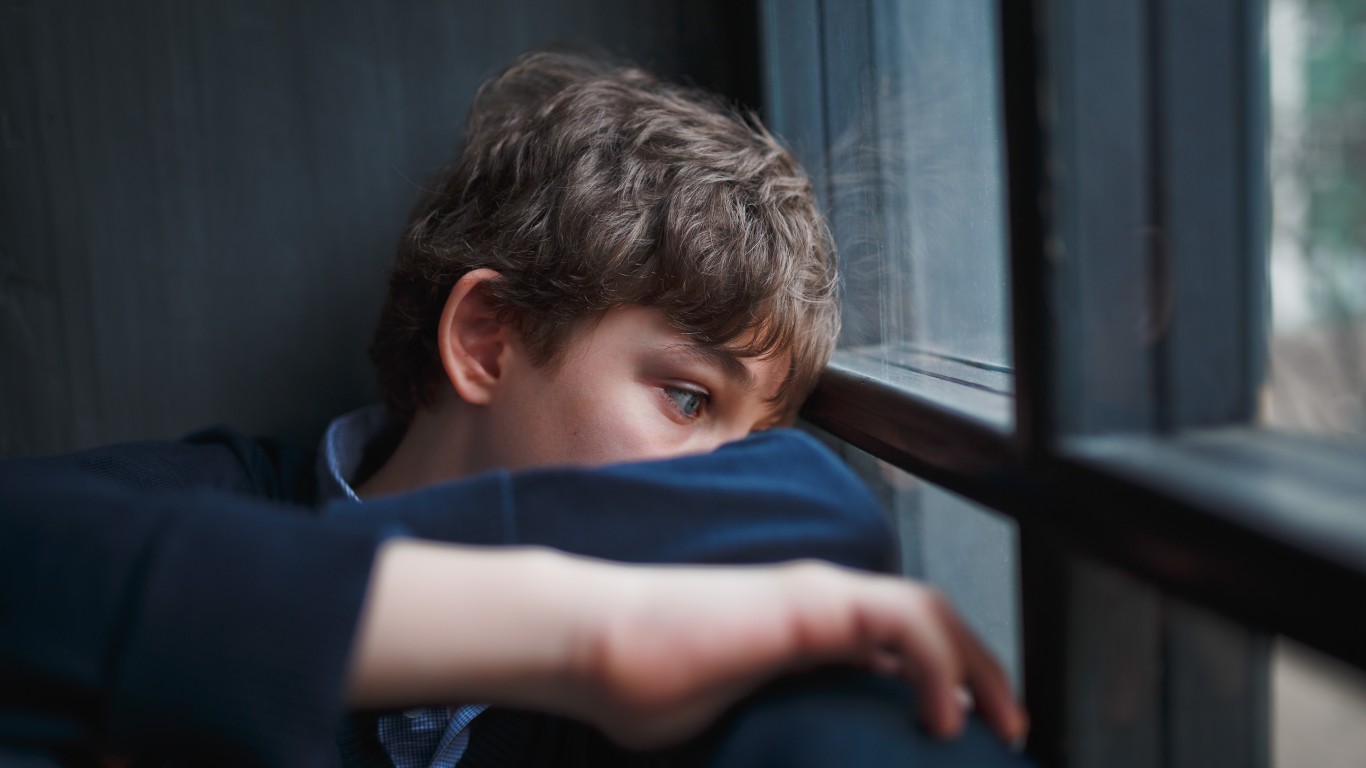
Depression
Depression has consistently been a concern for parents with young children. In 2016 and in 2017, about 40% of those surveyed identified depression as a problem. Parents of teens were more concerned about depression than parents of children up to 5 years old.
About 3% of children aged 3 to 17 years — approximately 1.9 million children — have been diagnosed with depression, according to the CDC. The percentage of children aged 6 to 17 years who have ever been diagnosed with either anxiety or depression went up from 5.4% in 2003 to 8% in 2007 and to 8.4% in 2011-2012. The percentage of those who have been diagnosed only with depression remained virtually the same between 2007 and 2012, at 4.7% and 4.9%, respectively.
Childhood depression is a serious health condition. If untreated, it may increase risk of prolonged and more severe depressive episodes in the future. According to the Anxiety and Depression Association of America, depression may also pose a risk of suicide, which itself is on the rise nationwide. (These are the most serious public health issues America is facing today.)
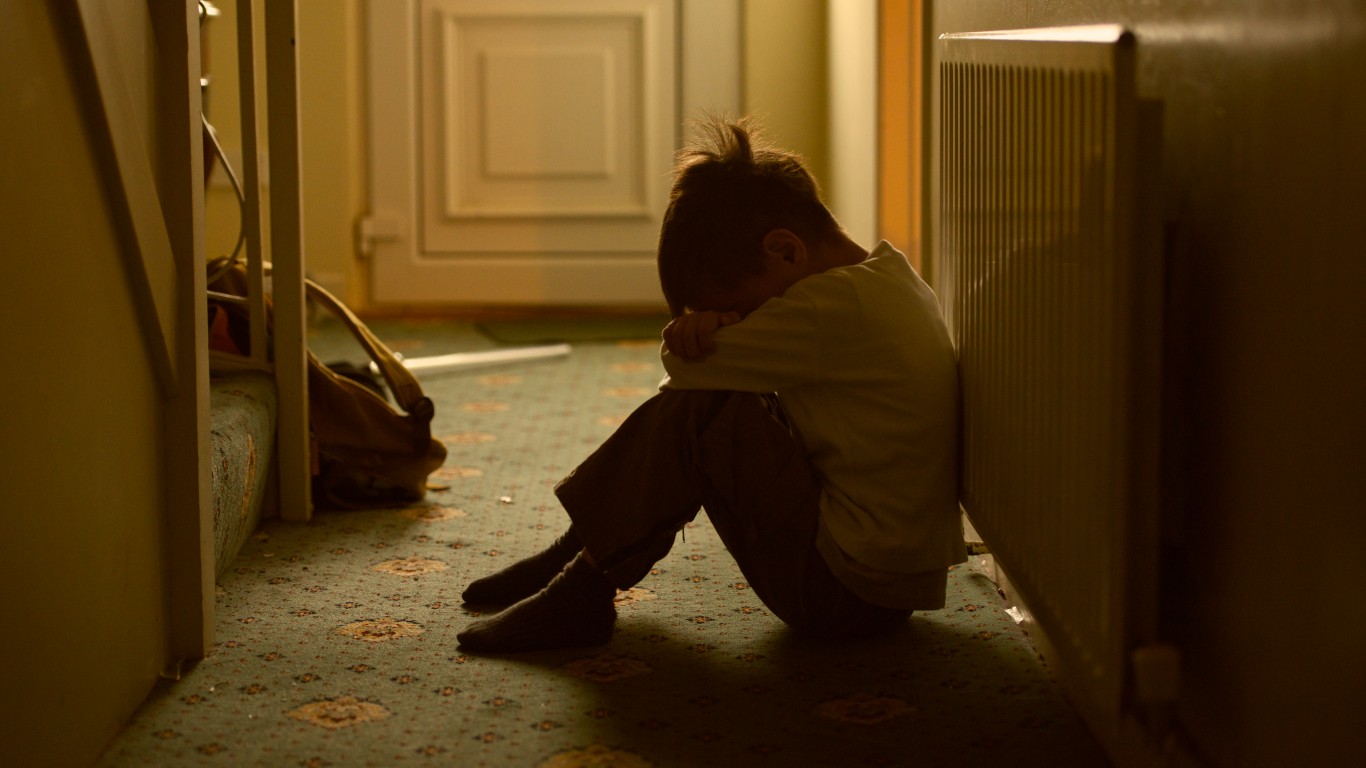
Neglect
Child neglect occurs when a parent or guardian fails to provide care, supervision, support, or display affection for children, who can become the victims of emotional, physical, or even educational neglect. Neglect can have lifelong consequences for a child’s well-being. Fifty-three percent of adults surveyed by the 2017 Mott Poll said neglect was a “big problem” for children and teens. This was up from 42% in the 2014 poll.
The CDC says that 1,710 children died as the result of abuse and neglect in 2018. The CDC estimated the cost of child maltreatment in the United States was about $428 billion in 2015.
[in-text-ad-2]

Abuse
Abuse can take three forms: physical, sexual, and emotional. All three can have profound effects on a child’s well-being and health. Physical abuse is the willful use of physical force against a person. Sexual abuse is pressuring a child into sex acts against his or her will. Emotional abuse involves behaviors in which the child is demeaned and his or her self-worth is harmed, such as through name calling, body-shaming, rejection, or threats.
The CDC estimates one in seven children experience abuse and rates of child abuse are five times greater for kids in families from lower economic backgrounds compared with children in higher socio-economic groups. Fifty-three percent of adults surveyed by the Mott Poll in 2017 said abuse was a “big problem” for children and teens.
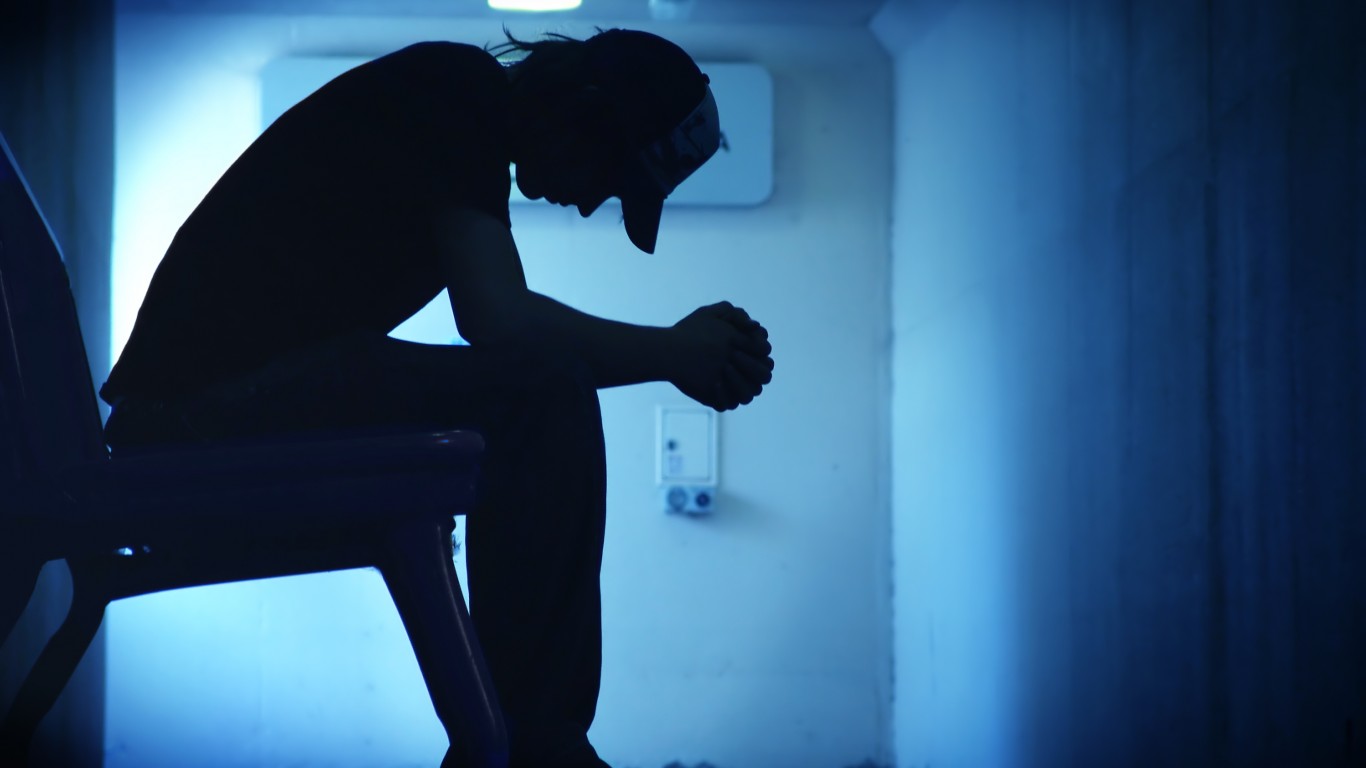
Suicide
Suicide is ranked as the seventh-biggest problem for children and teens, according to the 2017 Mott Poll, in which 45% of adults identified suicide as a “big problem.”
According to data from the National Center for Health Statistics, in 2017, suicide was the second-leading cause of death for those between the ages of 10 and 24. Following a stable period from 2000 to 2007, suicide rates for people between 10 and 24 years rose to 10.6 per 100,000 people from 6.8 in 2007.
Cyberbullying has been cited as a contributing factor, impacting the mental health of children, leading to anxiety and depression. Researchers at Harvard Medical School also said the rise in suicides might be linked to the opioid crisis and the stress that accompanies addiction.
[in-text-ad]

School shootings
Last month was the first March since 2002 that there were no school shootings in the United States. The main reason might be that most schools have been closed because of the coronavirus.
Shootings in schools have been a sad part of American life for a long time; however, the violence took an especially tragic turn in 1999, when two students killed 13 people at a high school in Columbine, Colorado. Schools have had to adopt measures such as hiring security personnel, digitally mapping schools, adding bolts and locks to doors, and requiring identification of visitors at schools. They have even considered arming teachers.
Following the attack at the Parkland High School in Florida two years ago, a Pew Research survey found 57% of teenage students worry that a shooting could occur at their school. In the wake of the Parkland shooting, many students and their parents took action and demonstrated against violence in a nationwide protest titled The March for Our Lives.

Sharenting
Parents who are proud of their children can be guilty of “sharenting,” or the excessive use of social media platforms to share content about their kids, such as baby pictures or stories about their children’s activities.
Leah Plunkett, author of “Sharenthood: Why We Should Think Before We Talk About Our Kids Online,” makes the point that sharenting puts children in the digital universe without their consent. Parents are in effect giving away their child’s right to privacy and are doing so without having thought through the repercussions.
Parents are advised to take a step back before posting anything online that might be embarrassing for their child in the future. They should ask themselves why they are sharing images and information, will their child be embarrassed in the future, and with whom are they sharing the images.
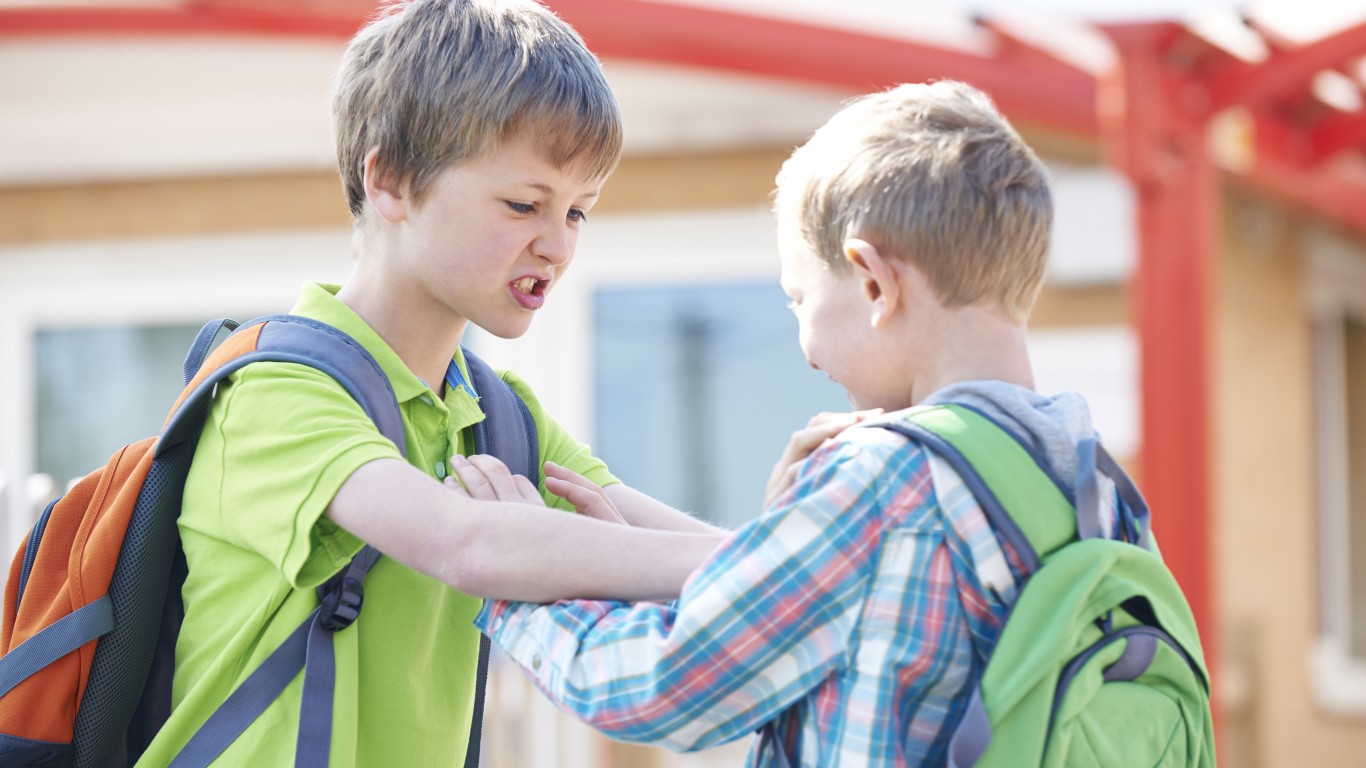
School violence
School violence was tied for second with racial inequalities as among the top 10 child health concerns among black adults in the Mott Poll in 2016. It is the seventh-highest concern among Hispanic adults and eighth among all parents, according to the Mott Poll.
According to data from a recent CDC nationwide Youth Risk Behavior Survey, about 9% of high school students had been involved in a physical altercation at school at least once over a 12-month period. Among the survey’s other findings, about 6% of students had been threatened or injured with a weapon at school at least once over the prior year. About 7% of pupils had not gone to school for at least one day because they felt unsafe either at school or on their way to or from school.
[in-text-ad-2]

Teen pregnancy
The good news regarding teen pregnancy is that the rate continues to fall. According to data from the CDC, 194,377 babies were born to women between the ages of 15 and 19 in 2017, a birth rate of 18.8 per 1,000 in that age cohort. The rate had been 20.3% in 2016. Since 1991, the teenage pregnancy rate has tumbled 70% from a record of 61.8 per 1,000. Declines occurred among all ethnic groups. Among the reasons for the drop are abstinence and greater use of birth control measures.
Even so, teen pregnancy rates in the United States remain a source of concern as they are higher than in other western nations, such as Canada and the United Kingdom. The rate of teenage pregnancy is higher in minority, less-educated, and lower income communities. Teenage pregnancy contributes to high school dropout rates among girls — only 50% of teenage mothers receive a high school diploma by the time they reach the age of 22. The children of teen mothers are more likely to have health problems, face employment challenges, and become incarcerated.
The Mott Poll in 2017 found that 43% of adults considered teen pregnancy a “big problem” and 81% of adults surveyed believed the state should play a role in supporting pregnant teens.

Sexting
Sexting is the sending or receiving of sexual images or suggestive messages through email or text messages on electronic devices. In 2016, sexting was the seventh biggest worry among parents for their children; in 2014, it was 13th. The messages and images can go viral, instantly leaving a permanent online footprint, and the results can have dire consequences. Sexting can be a form of bullying and humiliation, causing emotional and mental anguish for young people.
Laws pertaining to sexting are evolving and in some jurisdictions sexting is considered a version of distributing child pornography. States such as Utah are offering online courses alerting people to the dangers of sexting.
The average American spends $17,274 on debit cards a year, and it’s a HUGE mistake. First, debit cards don’t have the same fraud protections as credit cards. Once your money is gone, it’s gone. But more importantly you can actually get something back from this spending every time you swipe.
Issuers are handing out wild bonuses right now. With some you can earn up to 5% back on every purchase. That’s like getting a 5% discount on everything you buy!
Our top pick is kind of hard to imagine. Not only does it pay up to 5% back, it also includes a $200 cash back reward in the first six months, a 0% intro APR, and…. $0 annual fee. It’s quite literally free money for any one that uses a card regularly. Click here to learn more!
Flywheel Publishing has partnered with CardRatings to provide coverage of credit card products. Flywheel Publishing and CardRatings may receive a commission from card issuers.
Thank you for reading! Have some feedback for us?
Contact the 24/7 Wall St. editorial team.